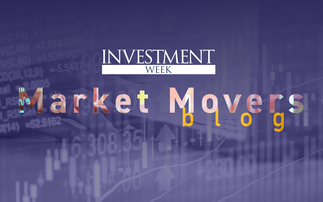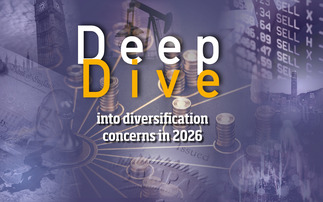Industry Voice sponsored by T. Rowe Price: Against a backdrop of slowing economic momentum, tighter liquidity, monetary policy divergence and political tensions, volatile market conditions are likely to persist in 2019.
Throughout 2018, the US Federal Reserve's rate hikes have fueled global volatility, in part by helping to push the US dollar higher. Political risk has also caused market jitters, including trade tensions between the US and China, the prospect of a disorderly Brexit, and a populist coalition government in Italy. In the short-term, global investors may need to buckle up, as political, monetary and trade uncertainty could generate more sudden spikes in market volatility.
Central bank policies have diverged
One potential catalyst for volatility is diverging monetary policies. Since the recovery from the 2008-2009 global financial crisis, global credit cycles have grown increasingly out of step. We expect this trend to continue.
The low volatility seen in many major markets in recent years wasn't sustainable without the ample liquidity provided by central banks following the financial crisis. But as the Fed shrinks its balance sheet and the European Central Bank winds down its stimulus efforts, markets are searching for a new footing at more sensible valuation levels given tighter monetary conditions.
Figure 1: Global credit cycles have desynchronized
T. Rowe Price estimates of macroeconomic positions
As of October 31, 2018
Source: T. Rowe Price
US-China trade
In our view, a number of political factors risk triggering further volatility in 2019.
Perhaps the most serious of these is the danger of a trade war between the US and China. Moves by the Trump administration to raise tariffs on Chinese goods, plus Beijing's retaliatory measures, have already have taken a toll on US stocks that rely on China‑related revenues. While the top China-exposed companies in the S&P 500 outperformed the index by a considerable margin in 2016 and 2017, much of that return advantage quickly disappeared after trade tensions reached a boiling point in the summer of 2018.
Although President Trump and Chinese President Xi Jinping agreed in early December to a temporary halt to tariff increases set for the end of 2018, the underlying issues remained unresolved. We estimate that higher tariffs on Chinese exports could do real, but manageable, damage to the US economic expansion. But the 2019 outlook would turn darker—both for the US and the global economy—if the Trump administration were to follow through on its threats to impose tariffs on all foreign vehicle and car‑part imports.
It's possible that the US and China will ultimately be able to settle their trade dispute. Beijing has signaled its willingness to accommodate the US in some areas,such as tariff cuts, safeguards for intellectual property, and increased purchases of US goods and services. However, on the US side, some of Trump's advisors may believe that criticizing China would be smart politics in the run up to the 2020 presidential election. But given the economic benefits and the boost a successful deal could give to asset valuations, there also are strong political incentives for Trump to compromise.
Politics and populism
A number of other political developments could trigger renewed volatility in 2019. A disorderly Brexit, or a clash between Italy's governing populist coalition and the European Union over its fiscal stimulus plans, could be sources of further market turbulence.
Volatility requires a strategic approach
With growth rates slowing in the developed economies, monetary policy tightening in the US, and political tensions lingering, market volatility has re-emerged. This, combined with disruptive forces in the corporate sector, has created an increasingly challenging environment for investors.
In this less-supportive environment, markets have begun to punish bad behaviour, taking aim at over leveraged companies, antiquated business models, and inflation prone sovereign debtors. As a result, security-specific risks are becoming increasingly critical. However, these risks also can generate potential opportunities for strategic investors to buy attractive assets at temporarily depressed prices. In-depth research and fundamental analysis are vital.
Read our full 2019 outlook here.













